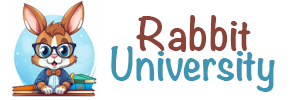Introduction
Are you a proud rabbit owner who’s always wondered why your furry friend enjoys chewing on cardboard? Well, you’re not alone!
That’s why we’ve dedicated this article to exploring the ins and outs of cardboard chewing in rabbits. We’ll dive into topics like whether it’s a sign of boredom, alternatives to cardboard, and how it benefits their dental health.
When we first noticed our rabbits chomping away at cardboard boxes, we couldn’t help but wonder what was going on. Turns out, it’s perfectly natural for rabbits to have a strong urge to chew.
This instinct carries over to our domesticated bunnies, leading them to seek out cardboard (among other things) to satisfy their chewing needs.
But is cardboard chewing just a way for rabbits to keep their teeth in check, or could it be a sign of boredom? Many rabbit owners worry that their furry friends might be chewing on cardboard out of boredom, but it’s not always that simple.
If you’re concerned about your rabbit’s cardboard-chewing habit, don’t fret! We’ll also share a list of safe and suitable alternatives to cardboard, such as willow sticks, apple twigs, and even hay cubes.
So whether you’re curious about why your rabbit loves cardboard or looking for ideas to keep them entertained, this article has got you covered. We’ll help you understand the fascinating world of cardboard chewing in rabbits and provide valuable insights to enhance your furry friend’s well-being.
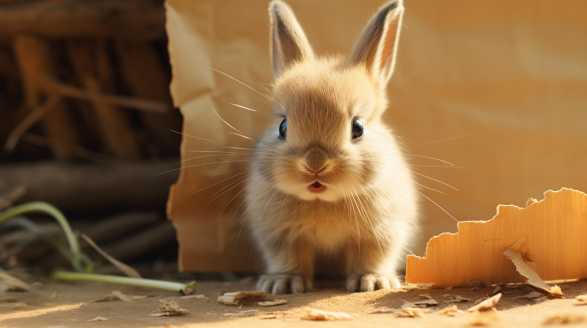
Key Takeaways
- Rabbits have a natural instinct to chew, and cardboard provides a safe and suitable material for them to satisfy this need.
- Cardboard chewing is essential for a rabbit’s dental health as it helps wear down their continuously growing teeth and prevents overgrowth.
- While cardboard chewing can occasionally be a sign of boredom, it is primarily a natural behavior and not necessarily indicative of boredom.
- To prevent boredom and provide mental stimulation, offer a variety of toys, create a safe play area, and spend time interacting with your rabbit.
- Safe and suitable alternatives to cardboard include willow sticks, apple twigs, hay cubes, vine balls, natural wood blocks, wicker baskets, and seagrass mats.
- Providing cardboard for rabbits to chew on offers dental health benefits, mental stimulation, environmental enrichment, and is cost-effective and easily accessible.
- Ensure the cardboard is non-toxic, free of adhesives or tape, and supervise your rabbit while they chew.
- Regularly replace cardboard toys to maintain safety and cleanliness.
- Other alternatives to promote dental health include willow or apple twigs, chewable toys designed for rabbits, and fresh vegetables.
Cardboard Chewing: Is it a Sign of Boredom in Rabbits?
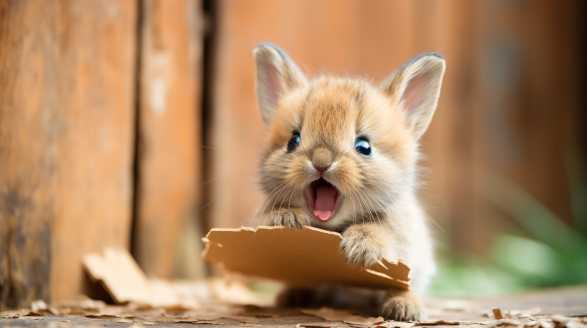
As a proud rabbit owner, I have often found myself fascinated by their quirky behaviors. One behavior in particular that has sparked my curiosity is their tendency to chew on cardboard.
Could it be a sign of boredom? Let’s dive into this interesting topic and explore all the ins and outs of cardboard chewing in rabbits.
What’s up with cardboard chewers?
When I first noticed my rabbit chewing on a cardboard box, I couldn’t help but wonder why. As it turns out, rabbits have a natural instinct to chew on things.
This instinct carries over to our domesticated furry friends, leading them to seek out items to chew on.
Chewing as a health necessity
Rabbits have continuously growing teeth, and if they don’t wear them down through chewing, it can lead to serious dental problems. Cardboard, being a fairly soft material, provides rabbits with the perfect surface to gnaw on without damaging their teeth.
Boredom buster or just a coincidence?
Now that we understand why rabbits chew on cardboard, let’s explore the connection between this behavior and boredom. Many rabbit owners worry that their furry friends are chewing on cardboard out of boredom, but the truth is, it’s not always that simple.
Signs of a bored bunny
To determine if cardboard chewing is a sign of boredom in rabbits, it’s essential to look for other behavioral cues that may indicate boredom. Here are some common signs:
- Excessive digging in their enclosure
- Overgrooming or self-mutilation
- Lack of interest in toys or playtime
- Restlessness or hyperactivity
- Destructive behavior, such as chewing on furniture or wires
If your rabbit displays any of these behaviors in addition to cardboard chewing, it might be a sign that they’re feeling bored and need some additional mental stimulation.
Enrichment activities for bored bunnies
If you suspect that your rabbit is bored, fret not! There are various enrichment activities that can keep them entertained and engaged.
Toys, toys, toys!
Rabbits love to play, and providing them with a variety of toys can help alleviate boredom. Consider including:
- Puzzle toys for mental stimulation
- Chew toys made from safe materials, such as untreated wood or seagrass
- Balls or rolling toys to encourage exercise
Remember to rotate their toys regularly to keep things fresh and exciting for your bunny.
Hide, seek, and forage
Rabbits are naturally curious and love to explore. Set up a safe and bunny-proof play area where they can have some supervised freedom.
Social interaction
Rabbits are social animals and benefit from spending time with their human companions. Regular interaction, such as gentle petting or grooming sessions, can provide them with the socialization they crave.
Cardboard alternatives
If you’re concerned about your rabbit’s cardboard-chewing habit, there are alternative options you can explore.
Hay, hay, and more hay!
Hay is a staple of a rabbit’s diet and also serves as an excellent alternative for cardboard. Providing them with plenty of fresh hay to nibble on not only helps wear down their teeth but also keeps their digestive system healthy.
Applewood sticks
Applewood sticks are another great option for rabbits to chew on. They are safe, natural, and help satisfy their chewing instinct.
Cardboard chewing in rabbits is primarily a natural behavior driven by their need to maintain healthy teeth. While it can occasionally be a sign of boredom, it’s crucial to observe their overall behavior to make that determination.
Remember to offer alternative chewing options like hay or applewood sticks to redirect their chewing instincts. So, don’t fret if you catch your rabbit nibbling on a cardboard box – they may just be taking good care of their dental health!
Alternatives to Cardboard for Rabbits’ Chewing Needs
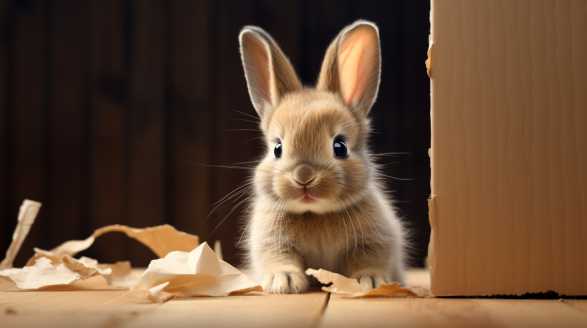
As a rabbit owner, I understand the struggle of finding suitable materials for your furry friend’s chewing needs. Cardboard has long been a popular choice, but what if you’re looking for alternatives?
Why Rabbits Need to Chew
Before we dive into alternatives, let’s understand why rabbits have an inherent need to chew. Rabbits are herbivores with continuously growing teeth.
Additionally, it provides mental stimulation and prevents boredom, which can lead to destructive behavior.
Now, let’s explore some alternative materials that can fulfill your rabbit’s chewing needs.
1. Willow Sticks
Willow sticks are a fantastic option for rabbits. They are safe, natural, and provide an excellent outlet for your rabbit’s chewing instincts.
2. Apple Sticks
Similar to willow sticks, apple sticks are another popular choice among rabbit owners. Not only are they safe for rabbits to chew on, but the slight apple flavor adds an extra element of excitement.
3. Hay Cubes
Hay cubes are another excellent alternative to cardboard. Not only do they satisfy your rabbit’s chewing needs, but they also provide essential fiber for their digestive system.
4. Vine Balls
Vine balls are great for both chewing and mental stimulation. These natural balls made from woven vines can be filled with hay or treats, encouraging your rabbit to chew and forage for rewards.
5. Natural Wood Blocks
If your rabbit is a heavy chewer, consider introducing natural wood blocks to their environment. Hardwood blocks, such as apple or pear, are safe and durable, providing a long-lasting chewing alternative.
6. Wicker Baskets
Wicker baskets serve a dual purpose by providing a cozy hiding spot, as well as a chew toy for your rabbit. The weaving materials used in these baskets are safe and enjoyable for rabbits to chew on.
7. Seagrass Mats
Seagrass mats are not only great for rabbit chewers but also for rabbits that love to dig. These mats provide a textured surface for chewing, while also allowing your rabbits to engage in natural digging behaviors.
Other Considerations
When introducing alternatives to cardboard for your rabbit’s chewing needs, it’s important to keep a few things in mind:
Safety First
Always prioritize your rabbit’s safety. Ensure that any materials you provide are free of toxins, chemicals, and small parts that could be swallowed.
Observe Preferences
Every rabbit is unique, so it’s essential to observe your pet’s preferences. Experiment with different materials and see which ones they enjoy the most.
Monitor Usage
Regularly check the condition of chewing materials. If they become worn down, splintered, or unsafe, replace them immediately.
While cardboard is a popular choice for rabbit chewing needs, there are many alternatives that can be just as effective, if not better. From willow sticks to seagrass mats, there is a wide variety of options that can keep your rabbit entertained and their teeth healthy.
The Benefits of Providing Cardboard for Rabbits to Chew On
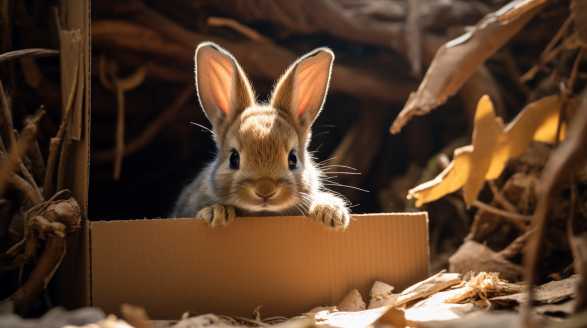
Hello fellow rabbit enthusiasts! Today, I want to dive deep into the topic of providing cardboard for our adorable furry friends to chew on.
Well,! we’ll explore the numerous benefits of offering cardboard as a chew toy for rabbits.
Chewing: A Natural Behavior for Rabbits
Before we dive into the benefits of providing cardboard for our rabbits, it’s important to understand why chewing is a natural behavior for them. Rabbits have constantly growing teeth, and chewing helps wear down their teeth and keep them in good shape.
Now that we know why chewing is essential for rabbits, let’s explore the benefits of using cardboard for this purpose.
Benefit 1: Dental Health
Maintaining proper dental health is vital for your rabbit’s overall well-being. Regular chewing on cardboard can help keep your rabbit’s teeth in tiptop condition.
So, by providing cardboard as a chew toy, you’re actively contributing to your rabbit’s dental health.
Benefit 2: Mental Stimulation
Rabbits are intelligent creatures that require mental stimulation to thrive. Boredom can lead to destructive behaviors or even health issues such as obesity.
The process of decimating cardboard stimulates their curiosity, providing a mental workout that can keep them entertained for hours.
Choosing the Right Cardboard
Not all cardboard is created equal when it comes to rabbits. Here are a few tips to keep in mind when selecting the perfect cardboard for your furry friend:
- Non-toxic Cardboard: Ensure the cardboard you provide is free from any toxic glues or chemicals. Opt for plain, untreated cardboard boxes.
- Avoid Glossy or Colored Cardboard: Stick to plain brown cardboard, as glossy or colored cardboard may contain ink or dyes that could be harmful to your rabbit.
- Avoid Plastic Coated Cardboard: Plastic coatings on cardboard can be hazardous if ingested by rabbits. Stick to cardboard that is 100% free of plastic coatings.
Benefit 3: Environmental Enrichment
Rabbits, in their natural habitat, are constantly foraging, digging, and exploring their surroundings. Domesticated rabbits often miss out on these natural behaviors unless we provide them with opportunities to mimic these actions.
Adding cardboard in their living area introduces a new dimension to their environment, allowing them to engage in instinctual behaviors and promoting overall mental and physical well-being.
Benefit 4: Cost-Effective and Easily Accessible
One of the greatest benefits of using cardboard as a chew toy for rabbits is its affordability and accessibility. Let’s face it, pet toys can be expensive, and rabbits, being avid chewers, can go through toys quite quickly.
So instead of spending extra money on commercial toys, grab some cardboard and let your rabbit indulge in an affordable and eco-friendly chewing experience.
Providing cardboard for rabbits to chew on offers a multitude of benefits. From promoting dental health and mental stimulation to environmental enrichment and cost-effectiveness, cardboard is a fantastic choice for our furry friends.
So, the next time you receive a package or have some spare cardboard lying around, don’t hesitate to give it to your rabbit. Watch their eyes light up with joy as they embark on a delightful chewing adventure!
Is Cardboard Safe for Rabbits to Chew on?
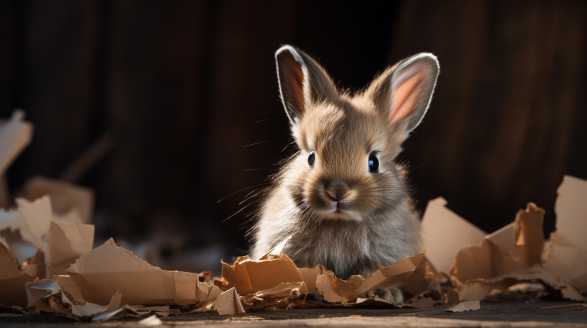
As a proud pet owner of a furry little rabbit, I have always been concerned about their health and well-being. One of the questions that frequently crosses my mind is whether cardboard is safe for rabbits to chew on.
Why do rabbits need to chew?
Rabbits are instinctively known for their chewing behavior. Just like their wild ancestors, domestic rabbits have teeth that continuously grow throughout their lives.
Chewing also provides mental stimulation, keeps their jaws strong, and alleviates boredom. Hence, providing appropriate chewing options for rabbits is essential for their overall well-being.
The safety of cardboard for rabbits
Many rabbit owners find cardboard to be a convenient and readily available chewing option for their furry companions. However, it is vital to ensure that the cardboard is safe for rabbits before presenting it to them.
1. Unprinted, non-toxic cardboard is the safest choice
Rabbits should only chew on cardboard that is free from any toxic inks or dyes. Avoid cardboard with glossy coatings, as these may contain harmful chemicals.
2. Check for any adhesives or tape
Before offering cardboard to your rabbit, make sure it is free from any adhesives or tape. These substances can be harmful if ingested, causing potential digestive issues.
3. Supervise your rabbit while chewing
Although cardboard is generally safe for rabbits, it is still important to supervise their chewing activities. Keep an eye on your rabbit to ensure they are not ingesting large quantities or attempting to swallow large pieces of cardboard.
Benefits of cardboard chewing for rabbits
Providing suitable chewing materials, such as cardboard, offers several benefits for your rabbit. Let’s explore some of them:
1. Keeps teeth healthy and trim
Chewing on cardboard helps wear down a rabbit’s continually growing teeth. By providing appropriate chewing options, you can prevent dental issues like malocclusion, where the teeth do not align properly.
2. Mental stimulation and enrichment
Rabbits are intelligent creatures that enjoy mental challenges. Offering cardboard as a chewing material can keep them entertained and mentally stimulated.
3. Cost-effective chew toy
Cardboard is a budget-friendly option for rabbit owners. Instead of investing in expensive chew toys, simply repurpose cardboard boxes or collect leftover scraps to provide your bunny with hours of chew-time pleasure.
It’s a win-win situation!
Alternatives to cardboard for rabbit chew toys
While cardboard can be a safe and enjoyable chew toy for your rabbit, it’s always good to have alternatives for variety. Here are some options you can consider:
1. Willow and apple twigs
Willow and apple tree branches or twigs are natural and safe chew toys for rabbits. These offer a variety of textures for your rabbit to chew on while providing mental stimulation and fulfilling their natural chewing instincts.
2. Untreated wicker or seagrass toys
Wicker balls, tunnels, or mats made from untreated materials are an excellent choice for rabbits. These toys provide both a chewing challenge and a cozy hideaway for your furry friend.
3. Edible chew toys
Several pet stores offer chew toys made from compressed hay or other edible materials. These options allow your rabbit to satisfy their chewing needs while enjoying a tasty treat at the same time.
Cardboard can be a safe and suitable chew toy option for your rabbit if used correctly. Always ensure the cardboard is non-toxic, free from adhesives or tape, and supervise your rabbit while chewing.
So, the next time you have some leftover cardboard lying around, feel free to share it with your rabbit and watch them nibble away with joy!
The Link between Cardboard Chewing and a Rabbit’s Dental Health
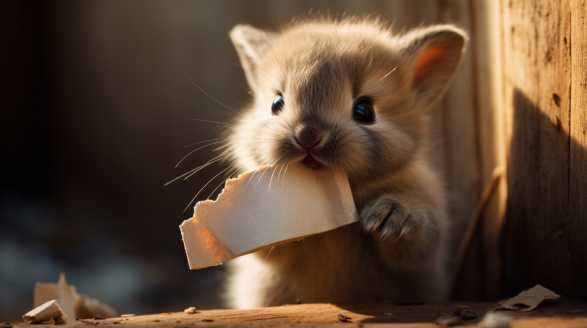
As a proud rabbit owner, I have always been fascinated by the behaviors and habits of these fluffy creatures. One particular behavior that caught my attention is their love for chewing on cardboard.
So, without further ado, let’s dive into the intriguing world of cardboard chewing and its impact on a rabbit’s dental wellbeing.
Why do rabbits chew cardboard?
Before we explore the dental implications of cardboard chewing, let’s understand why rabbits have an affinity for this material in the first place. Rabbits are natural chewers, and chewing serves several important purposes for them:
- Dental wear: Rabbits’ teeth continually grow, and chewing helps wear down their teeth to prevent overgrowth, which can lead to various dental issues.
- Entertainment: Chewing on cardboard keeps rabbits mentally stimulated and helps prevent boredom.
- Exploration: Rabbits are highly curious animals, and chewing on different textures, such as cardboard, allows them to explore their environment.
The dental benefits of cardboard chewing
Now that we comprehend rabbits’ love for cardboard, let’s explore how this behavior positively impacts their dental health. By engaging in regular cardboard chewing, rabbits enjoy the following dental benefits:
1. Natural tooth filing
The tough, fibrous texture of cardboard aids in naturally filing down a rabbit’s ever-growing teeth. This chewing action helps maintain the correct length, shape, and alignment of their teeth.
2. Strengthening jaw muscles
Rabbit jaws are incredibly powerful and built for chewing tough and fibrous materials. By gnawing on cardboard, rabbits exercise their jaw muscles, promoting jaw strength and flexibility.
3. Tartar prevention
Cardboard chewing leads to increased saliva flow, which helps wash away food particles and reduce plaque buildup on a rabbit’s teeth. This, in turn, minimizes the risk of tartar formation, which can lead to gum disease.
4. Mental stimulation and stress reduction
Chewing on cardboard acts as a stress-reliever and provides mental stimulation for rabbits. These activities promote overall well-being and help prevent negative behaviors associated with stress and boredom, such as destructive chewing on other objects.
Ensuring safe cardboard chewing
Although cardboard chewing offers numerous dental benefits, it is essential to ensure the safety of your furry friend during this activity. Here are some guidelines to follow:
1. Use non-toxic cardboard
When providing cardboard for your rabbit to chew on, ensure it is free from any toxic coatings or adhesives. Opt for plain cardboard boxes or tubes without any additional chemicals that could harm your pet.
2. Monitor chewing habits
Keep an eye on your rabbit’s chewing habits to ensure they do not ingest large pieces of cardboard. Ingesting cardboard can lead to gastrointestinal blockages, which is hazardous for your bunny’s health.
3. Regularly replace cardboard toys
Over time, cardboard can become worn, soiled, or potentially contaminated. Replace cardboard toys periodically to maintain cleanliness and ensure the safety of your rabbit’s chewing experience.
Alternatives to cardboard for dental health
While cardboard is a popular choice for rabbits’ oral stimulation, there are other alternatives you can explore to promote dental health:
1. Willow or apple twigs
Providing safe, untreated willow or apple tree twigs can mimic the benefits of cardboard chewing. Rabbits often enjoy nibbling on these natural materials, promoting dental wear and mental stimulation.
2. Chewable toys designed for rabbits
There is a wide array of chewable toys available that are specifically designed to meet rabbits’ dental needs. These toys are made from safe materials, providing rabbits with a range of textures to chew on and explore.
3. Fresh vegetables
Offering fresh vegetables, such as carrot tops, broccoli stems, or celery, can provide both dental and nutritional benefits to your rabbit. The act of gnawing on these fibrous veggies helps maintain dental health while providing essential vitamins and nutrients.
It is fascinating how something as simple as cardboard chewing can play a crucial role in a rabbit’s dental health. By indulging in this behavior, rabbits naturally file their teeth, strengthen their jaw muscles, prevent tartar buildup, and find mental stimulation.
So, next time you see your fluffy companion happily gnawing on a cardboard box, rest assured that they are enjoying not only a favorite pastime but also improving their dental well-being.
Conclusion
In conclusion, after diving into the world of cardboard chewing in rabbits, I’ve gained a deeper understanding of this fascinating behavior. It turns out that cardboard chewing is a natural instinct for rabbits, driven by their need to wear down their teeth and prevent overgrowth.
To keep our furry friends entertained and mentally stimulated, it’s crucial to provide a variety of toys and create a safe play area where they can explore and forage for treats. Interacting with them regularly through grooming sessions or gentle petting also goes a long way in keeping them happy.
If you’re concerned about using cardboard as a chewing material, there are plenty of safe and suitable alternatives to explore, such as willow sticks, apple twigs, hay cubes, and wicker baskets. These options not only provide a chewing outlet for rabbits but also offer mental stimulation and promote dental health.
Ultimately, providing cardboard or other suitable materials for rabbits to chew on offers a multitude of benefits, including dental health, mental stimulation, and environmental enrichment. It’s a cost-effective and easily accessible option that can keep our furry friends entertained and their teeth in excellent condition.
Frequently Asked Questions
Can rabbits chew on cardboard?
- Yes, rabbits can safely chew on cardboard. In fact, chewing is a natural behavior for rabbits and helps to wear down their constantly growing teeth.
Is cardboard safe for rabbits to ingest?
- While rabbits can chew on cardboard, they should not ingest large amounts of it. Swallowing too much cardboard can lead to digestive issues and blockages. It’s important to monitor your rabbit’s chewing habits and remove any ingested pieces promptly.
What types of cardboard are safe for rabbits?
- Plain, uncoated cardboard without any adhesives or inks is safest for rabbits to chew on. Avoid cardboard with glossy coatings, printed designs, or any potentially hazardous substances.
Are there any precautions I should take when giving my rabbit cardboard to chew on?
- To ensure your rabbit’s safety, remove any tape, staples, or other non-cardboard materials attached to the cardboard before giving it to your rabbit. It’s also a good idea to supervise their chewing to prevent them from ingesting large pieces.
Can rabbits use cardboard as a toy?
- Yes, cardboard can make a great toy for rabbits. Besides being safe to chew on, cardboard can also provide mental stimulation and enrichment for your rabbit. You can create tunnels, hide treats, or even build simple structures using cardboard for your bunny to explore.
Are there any alternative rabbit-safe chew toys?
- Yes, there are many other rabbit-safe chew toys available that can provide variety and help satisfy your rabbit’s natural chewing instincts. Wood blocks, willow balls, and untreated wicker baskets are some alternatives you can offer.
How can I prevent my rabbit from chewing on items they shouldn’t?
- Providing plenty of appropriate chew toys and regularly rotating them can help redirect your rabbit’s chewing behavior. Ensuring they have enough space, stimulation, and a healthy diet can also reduce the urge to chew on inappropriate objects.
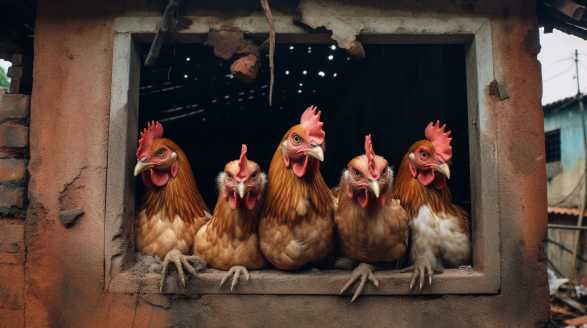
Can Rabbits And Chickens Live Together
Introduction Can rabbits and chickens live together? Let’s find out. Imagine fluffy bunnies with their twitching noses and soft fur, quietly hopping along as chickens joyfully cluck and peck at the ground. It’s like a scene right out of a storybook! But, of course, it’s not all rainbows and sunshine. Keeping rabbits and chickens together […]
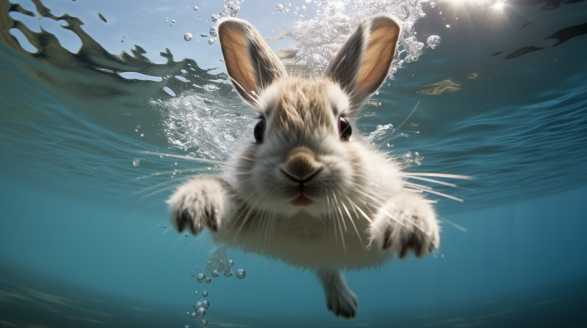
Can Rabbits Swim
Introduction Can rabbits swim? Let’s find out. Together, we’re about to embark on an underwater adventure to uncover the truth behind rabbits and their hidden aquatic abilities. Picture this: fluffy little rabbits gracefully gliding through the water, their ears adorably upright as they navigate the depths below. Sounds pretty incredible, right? It’s like discovering a […]
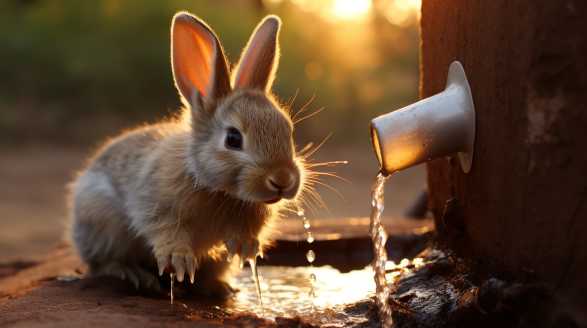
What Do Rabbits Drink
Introduction Are you a rabbit owner looking to make sure your furry friend is getting the best care possible? You’re in the right place! You might already know that rabbits need a balanced diet to stay healthy, but did you know that water is a crucial part of that equation? It’s true! But how much […]
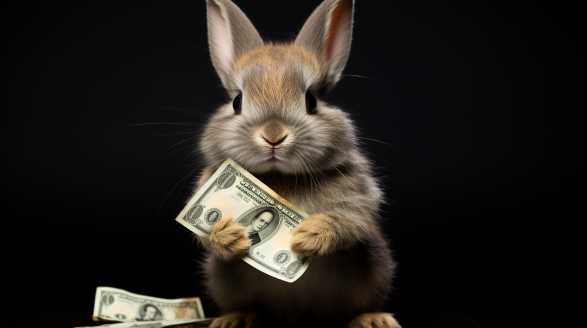
How Much Do Rabbits Cost
Introduction How much do rabbits cost? Let’s find out. From the adorable bunnies to the mischievous adults, we’re going to uncover the real cost of raising these furry bundles of joy. And, it’s going to be a whirlwind ride! Picture this: fluffy bunnies bouncing around your home, their adorable little noses twitching with curiosity. As […]
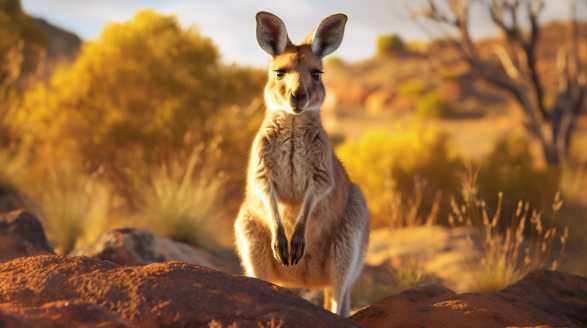
Are Kangaroos Related To Rabbits
Introduction Are kangaroos related to rabbits? Let’s find out. Buckle up, because this is going to be a adventure! Picture this: you find yourself in the vast Australian outback, surrounded by the breathtaking landscapes that stretch as far as the eye can see. Suddenly, you spot a kangaroo bounding effortlessly across the plains, its powerful […]
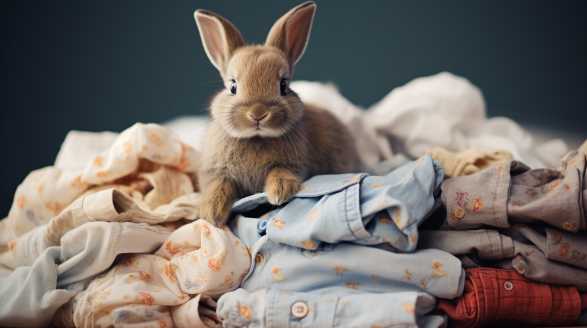
Why Do Rabbits Bite Your Clothes
Introduction Hey there, rabbit owners! We know how delightful it is to have these fluffy creatures hopping around our homes. Can you relate? Don’t worry, we’ve got your back! we’re diving into the fascinating world of rabbit behavior and tackling the topic of fabric chewing head-on. We’ll explore the reasons behind why rabbits have a […]
